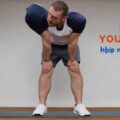Introduction to Mobility Yoga
Welcome to the wonderful world of mobility yoga! If you’re looking to increase your flexibility, reduce stiffness, and improve your overall wellbeing, you’ve come to the right place. Mobility yoga is a gentle yet powerful practice that combines traditional yoga postures with targeted mobility exercises to help you move with greater ease and freedom. This beginner’s guide will introduce you to the basics of mobility yoga and show you how to get started on your journey to a more flexible, balanced body and mind.
What is Mobility Yoga?
Mobility yoga is a holistic approach to movement that focuses on improving your body’s range of motion, flexibility, and overall function. Unlike traditional yoga which often emphasizes holding static poses, mobility yoga incorporates dynamic movements and gentle flows to target specific joints and muscle groups. The goal is to enhance your body’s ability to move freely and comfortably in all directions.
Some key elements of mobility yoga include:
- Gentle joint rotations and articulations
- Dynamic stretching sequences
- Breath-synchronized movements
- Balance and stability exercises
- Mindful body awareness practices
Benefits of Mobility Yoga for Beginners
Embarking on a mobility yoga practice can bring numerous benefits to both your body and mind. As a beginner, you may experience:
- Reduced joint pain and stiffness
- Improved posture and body alignment
- Increased flexibility and range of motion
- Enhanced balance and coordination
- Better body awareness and mindfulness
- Reduced stress and anxiety
- Improved overall physical function and quality of life
Remember, the journey of mobility yoga is not about achieving perfect poses or pushing your body to its limits. Instead, it’s about listening to your body, moving with kindness and compassion, and gradually expanding your movement potential.
Getting Started with Mobility Yoga
Starting a mobility yoga practice doesn’t require any special equipment or prior experience. Here are some tips to help you begin:
- Start slowly: Begin with short, gentle sessions and gradually increase duration and intensity as you become more comfortable.
- Listen to your body: Pay attention to how your body feels and respect its limits. Never force a movement that causes pain.
- Focus on breath: Coordinate your movements with your breath to enhance mindfulness and body awareness.
- Be consistent: Try to practice a little bit every day, even if it’s just for 10-15 minutes.
- Use props: Don’t hesitate to use yoga blocks, straps, or pillows to support your practice and make poses more accessible.
Simple Mobility Yoga Sequences for Beginners
Here are a few simple sequences to get you started on your mobility yoga journey:
1. Gentle Neck and Shoulder Mobility
- Slowly roll your head in circles, 5 times in each direction
- Shrug your shoulders up to your ears, then release down, repeat 5 times
- Interlace your fingers behind your back, gently open your chest
2. Spine Mobility Flow
- Start on hands and knees in table pose
- Inhale, arch your back (cow pose)
- Exhale, round your spine (cat pose)
- Repeat 5-10 times, moving with your breath
3. Hip Mobility Sequence
- Stand with feet hip-width apart
- Slowly circle your hips 5 times in each direction
- Step one foot forward into a low lunge, hold for 5 breaths
- Switch sides and repeat
Remember to move slowly and mindfully, focusing on how each movement feels in your body.
Cultivating Mindfulness in Mobility Yoga
Mobility yoga is not just about physical movement—it’s also an opportunity to cultivate mindfulness and deepen your connection with your body. As you practice, try to:
- Focus on the sensations in your body as you move
- Notice your breath and how it changes with different movements
- Approach your practice with curiosity and compassion, rather than judgment
- Set an intention for your practice, such as moving with kindness or gratitude
By bringing mindfulness to your mobility yoga practice, you can enhance its benefits and create a more holistic, nurturing experience for yourself.
Frequently Asked Questions about Mobility Yoga
Q1: How often should I practice mobility yoga?
A1: For beginners, aim to practice 2-3 times a week for 15-30 minutes. As you become more comfortable, you can increase the frequency and duration of your sessions. Remember, consistency is more important than intensity.
Q2: Do I need to be flexible to start mobility yoga?
A2: Not at all! Mobility yoga is designed to improve flexibility and range of motion over time. Start where you are, and remember that everyone’s body is different. Focus on your own progress rather than comparing yourself to others.
Q3: Can mobility yoga help with chronic pain?
A3: Many people find that mobility yoga can help manage chronic pain by improving flexibility, reducing stiffness, and promoting relaxation. However, it’s important to consult with your healthcare provider before starting any new exercise program, especially if you have chronic pain or medical conditions.
Q4: What’s the difference between mobility yoga and regular yoga?
A4: While there’s overlap between mobility yoga and traditional yoga, mobility yoga places more emphasis on dynamic movements and joint articulations. It focuses specifically on improving range of motion and functional movement patterns, whereas traditional yoga may have broader goals including strength, flexibility, and spiritual practice.
Q5: Can I combine mobility yoga with other forms of exercise?
A5: Absolutely! Mobility yoga can be a great complement to other forms of exercise. It can help improve your performance in other activities by enhancing flexibility and body awareness. Many people find it beneficial to incorporate mobility yoga as a warm-up or cool-down for other workouts, or as active recovery between more intense training sessions.
Remember, the journey of mobility yoga is about self-discovery, compassion, and gradual improvement. Embrace the process, listen to your body, and enjoy the path to greater mobility and wellbeing. Your body will thank you for the care and attention you’re giving it through this beautiful practice.









